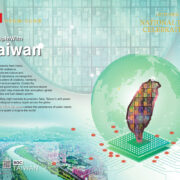Developing countries’ dilemma: Get rich without getting fat

Jakarta—The global effort to eradicate hunger by 2030 is facing a gradual challenge. After world hunger decreased from around 19 percent to 11 percent of the worldwide population in 2014, there were occasional setbacks in the past five years.
To make matters worse, there has been an increase in diabetes cases in developing countries. This potentially hinders the ideal development outcome to get rich without getting fat.
According to the Global Hunger Index, even though the 2023 global GHI score has decreased from 19.1 in 2015 to 18.3, the number of undernourished surged. The share of globally malnourished people increased from 7.5 percent in 2017 to 9.2 percent in 2022, reaching approximately 735 million persons.
Another challenge faced by both developed and developing countries is obesity. Over 1 billion people worldwide lived with obesity in 2022. Since 1990, adult obesity rates have at least doubled, while the rates among children and adolescents (aged 5 to 19) have quadrupled.
Stunting lowers human productivity, which then leads to economic underperformance. Meanwhile, obesity puts a strain on the national health expenditure.
As developing countries, Indonesia and Mexico face double problems since hunger and obesity exist like two sides of a coin.
The World Obesity Observatory reported that in 2019, the economic impact of overweight and obesity in Indonesia was $17.47 billion, representing 1.6 percent of the country’s GDP. This number is projected to reach 4.7 percent by 2060.
A similar trend happened in Mexico, where the cost of the obesity issues in 2019 was estimated at $23.17 billion or 1.8 percent of GDP. By 2060, these expenses are forecast to reach 5 percent.
The Indonesian Health Ministry recorded the trend of an increasing proportion of obesity in adults from 2007 to 2018. Obesity in 2007 reached 10.5 percent and increased to 14.8 percent in 2017. At the end of the period, the percentage rose to 21.8 percent.
There is also a nutrition problem in Indonesia, especially among children. While the prevalence of stunting in Indonesia has decreased from 27.7 percent in 2019 to 21.6 percent in 2022, it is still far from the government target of 14 percent in 2024.
Stunting prevalence in Mexico is lower than in Indonesia. The National Health and Nutrition Survey 2022 reveals that in 2021, 12.6 percent of children under five suffer from stunting at the national level.
While Mexico has been part of the Organization for Economic Co-operation and Development (OECD) for two decades, there has been a rise in overweight and obesity prevalence, with men’s rates increasing from 50 percent to 65.4 percent and women’s from 56.5 percent to 67.6 percent between 1994 and 2016, according to the Pan American Health Organization.
Mexico is one of the world’s leading consumers of sweetened beverages. Also, economic development and free trade agreements have reshaped the food landscape in the country.
In Indonesia, sugary foods are also sold cheaply and are widely available throughout the country.
Indonesia’s government should consider policies addressing the malnutrition and obesity challenges. On the demand side, the government should boost society’s purchasing power. When people have high income, they can alternate their diet by consuming healthy food and low-sugar products despite the price.
In Mexico, from 1992 to 2016, households allocated a smaller share of their budgets to vegetables and fruits, likely because these items tend to be more expensive.
Both Indonesia and Mexico can learn from Japan, the only country to get rich without its population getting fat, due to the country’s policies in preventing obesity.
According to the 2017 OECD obesity update, Japan exhibited the lowest obesity prevalence at 4 percent.
Some of the critical policies that Japan has implemented to combat lifestyle-related diseases include Healthy Japan 21, which serves as the cornerstone preventive policy. This initiative focuses on promoting changes in nutrition and eating habits, encouraging physical activity and exercise, and emphasizing the importance of mental health care and adequate rest.
Japan also enacted the Basic Law on Food Education (Shokuiku kihonhō) in 2005. This law aims to educate the public about the significance of proper meals to address issues such as inappropriate eating habits, dietary problems and other lifestyle-related diseases.
This proves that in addition to government policies, it is essential for health-care and educational systems in Indonesia and Mexico to play a fundamental role, not only in resolving nutrition problems, but in preventing them. These efforts should be guided and supported by health-care professionals who can provide ongoing guidance and oversight. The Jakarta Post/Asia News Network
—————-
Rusli Abdulah is a researcher at Institute for Development of Economics and Finance. Katerine Restrepo Gómez is a student at Graduate School of International Development, Nagoya University.
—————-
The Philippine Daily Inquirer is a member of the Asia News Network, an alliance of 22 media titles in the region.

















